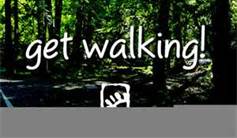Indulging in Alcohol has been a pastime that dates back to Roman times. In almost every culture, alcohol has played a very important role in its history, good or bad. “We drink for different reasons”, says Caren Osten Gerszberg, the co-founder of the popular lifestyle blog Drinking Diaries. We drink, “to quench thirst, to loosen up, because it tastes good, to enhance a meal, because we’re addicted, as part of a ceremony, to celebrate, to mourn. We drink when we’re happy. We drink when we’re sad.” In my twenties, getting together with my girlfriends meant finishing a few bottles of wine. Now I have two kids in their twenties, a sophomore in college and a recent Graduate, and I know they are doing the same. Rite of passage, way to unwind, liquid courage, social bonding–whatever the reason there is plenty of boozing taking place for girlfriends across the country. However, my girls were taught to drink responsibly because they know the risks of drinking are far greater than the rewards. In the U.S our laws restrict anyone under the age of 21 from drinking alcohol, therefore, to drink underage is a huge risk personally and is against the rules for Au pair In America.
As your counselor I recommend that you withstand drinking underage in the USA. When that time comes that you are legally allowed to drink in the U.S. Or if you are currently of drinking age, here is the advice I have told my own daughters.
Top rules you need to know before the big “Salud”!
Rule No.1:
DO NOT DRINK AND DRIVE. This rule not only concerns your safety but your future as an Au pair. Your Host Family has trusted you with their car to drive their children. Do not ruin that trust or risk damaging their property. I’ll warn you now that If you drive under the influence, you will get arrested. The police in Georgia have cracked down on drinking and driving. For anyone over 21 the legal limit is a BAC ( Blood Alchohol Content ) of .08. This is having only 1 alcoholic beverage. If you are under 21 and if you have had even a sip of alcohol, you can be arrested for underage drinking as well as driving under the influence. Read Georgia’s drinking laws below:
“Like most states, the maximum BAC (blood-alcohol content) permissible by DUI law in Georgia is .08 percent. Over this level, a driver is considered ‘per se intoxicated’ and can be proven guilty Georgia DUI based on this confirmed intoxication level alone.
‘Zero tolerance laws’ are intended to keep drivers under the legal drinking age from indulging in the risk of drinking and driving, and therefore there are stricter penalties and limits for underage drivers. A person under the age of 21 is allowed just .02 percent BAC limit by law before being subjected to DUI penalties.”
Rule No. 2:
PLAN AHEAD. Plan how you will get home before you go out and always make sure your phone is charged.There are many options for getting home such as an Uber, Lyft, a Taxi or a Designated Driver (a friend that agrees not to drink and to make sure everyone is safe while consuming alcohol. )(https://get.uber.com/sign-up/?exp=home_signup_form) .
Rule No. 3:
DRINK IN MODERATION. Know the alcohol content of your drink. The alcohol content or alcohol by volume (ABV) is a standard measurement of how much alcohol is contained in your drink. Interestingly, there is the same amount of alcohol in:
- 1 regular beer (340 ml/12 oz)
- 1 glass of wine (140 ml/5 oz)
- 1 glass of fortified wine (85 ml/3 oz)
- 1 shot of spirits (45 ml/1.5 oz)
So count each drink the same, whether it’s a shot of Tequila or a glass of Merlot. Also, a good rule of thumb is that your body digests one drink an hour. So be aware of how much you are consuming and know when enough is enough.
Rule No. 4:
BE SAFE. I want you to have a fulfilling Au pair experience, which will include meeting new friends and even becoming a part of a whole new family. I know how hard each of you work during the week, so when you do have free time I hope that you will have fun and enjoy it, but please BE SMART and keep in mind why you’re here. The experiences you make in America will last a lifetime, so you will want to remember every minute of it.






